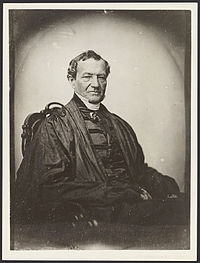Post Author: Bill Pratt
 In part 3 we finished looking at Richard Bauckham’s second reason for rejecting the anonymity of the Gospels. Bauckham concludes with the third of his three reasons. About the first two reasons, Bauckham explains that these
In part 3 we finished looking at Richard Bauckham’s second reason for rejecting the anonymity of the Gospels. Bauckham concludes with the third of his three reasons. About the first two reasons, Bauckham explains that these
two lines of argument establish that as soon as the Gospels circulated around the churches they had author’s names attached to them, even though such names were not part of the text of the Gospels. Our further question about anonymity concerns the contents of the Gospels: do the Gospel-writers present the traditions they preserve as derived from named eyewitnesses or as anonymous community tradition to which no specific names could be attached? Here we need only to resume the evidence we discussed in chapters 3– 8:
(i) Where the names of relatively minor characters are given in the Gospels, the reason is usually that the tradition to which the name is attached derived from that person.
(ii) In all three Synoptic Gospels, the explanation of the care with which the list of the Twelve has been preserved and recorded is that they were known to be the official body of eyewitnesses who had formulated a body of traditions on which the three Synoptic Gospels depend.
(iii) Three of the Gospels — Mark, Luke, and John — deploy a literary device, the inclusio of eyewitness testimony, to indicate the most extensive eyewitness source( s) of their Gospels. Mark’s use of the device points to Peter (indicating that Mark’s traditions are those of the Twelve in the form that Peter told and supplemented). Luke also acknowledges Peter as the most extensive eyewitness source of his narrative, but by making also a secondary use of the device he indicates that the group of women disciples of Jesus were also an important eyewitness source of his Gospel. John’s Gospel plays on Mark’s use of this device in order to stake its claim for the Beloved Disciple as an eyewitness as important as — even, in a sense, more important than — Peter.
What do all of these arguments prove about the Gospels?
These arguments show not simply that, as a matter of fact, the traditions in the Gospels have eyewitness sources but, very importantly, that the Gospels themselves indicate their own eyewitness sources. Once we recognize these ways in which the Gospels indicate their sources, we can see that they pass on traditions not in the name of the anonymous collective but in the name of the specific eyewitnesses who were responsible for these traditions.
What Bauckham has said is incredibly important. He has made persuasive arguments that the contents of the four Gospels derive from eyewitness sources and that these sources were well-known by the early Christian community. The idea that the Gospels are an anonymous collection of legends and tales that were eventually compiled into written accounts just does not stand up from the evidence.
